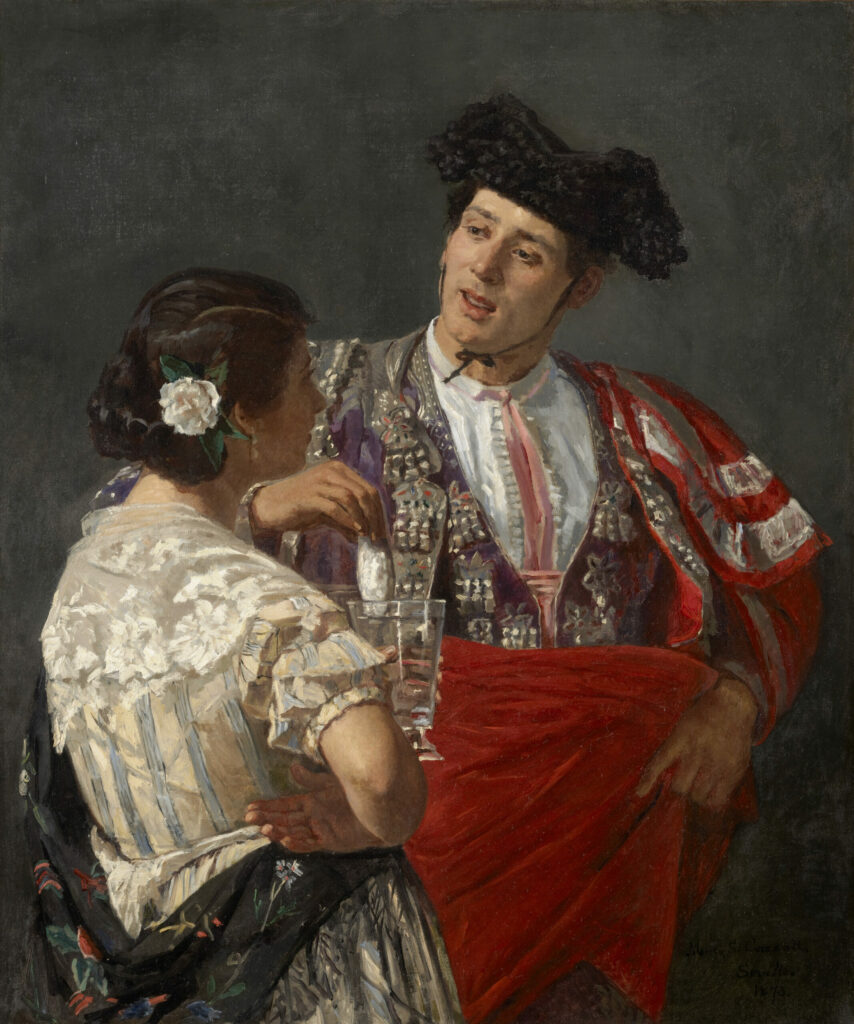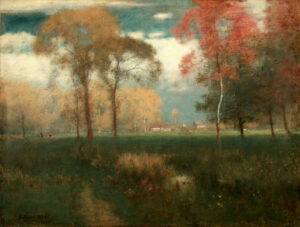
Seville, 1873. A young woman gracefully offers a glass of water to a bullfighter. The matador dips his golden honeycomb into it, quenching his thirst after the arena. Mary Cassatt captures this moment of Spanish seduction, where the everyday adorns itself with the trappings of spectacle.
A Radiant Genre Scene
The composition brings together two figures in unsettling proximity. The bullfighter, elegant in his suit of lights embroidered with gold and silver, turns his gaze. His knowing expression invites us into the intimacy of the moment. The young woman wears a white dress adorned with lace. Her delicate gesture contrasts with the virile bearing of the matador. Cassatt works the pictorial material with freedom. The touches of color are boldly placed, the vermilion red of the cape vibrates against the creamy whites. The gray-brown background makes the flesh tones and shimmering textiles burst forth.
The Legacy of Velázquez
In 1873, Cassatt stays in Spain to study the old masters. At the Prado Museum, she immerses herself in Velázquez’s art, whose finesse and simplicity she admires. This influence shows through in her palette, her energetic touch, and her attention to textures. The American then creates several scenes, capturing local customs with accuracy. The panal ritual—this tradition of offering honey to bullfighters to rehydrate them—becomes the pretext for a painted gallantry.
Mary Cassatt Before Impressionism
Before becoming the great portraitist of motherhood and Degas’s ally, Mary Cassatt (1844-1926) travels through Europe to perfect her training. These Spanish apprenticeship years shape her eye and hand. She already develops that psychological sensitivity that would characterize her art.
Think about it
💭 Does the bullfighter’s costume become here a pretext for exploring light and material as Velázquez and Manet did before her?
About this work
- Offering the Panal to the Bullfighter
- Mary Cassatt
- 1873
- Oil on canvas
- 100.6 × 85.1 cm
- The Clark Art Institute
- 1955.1






